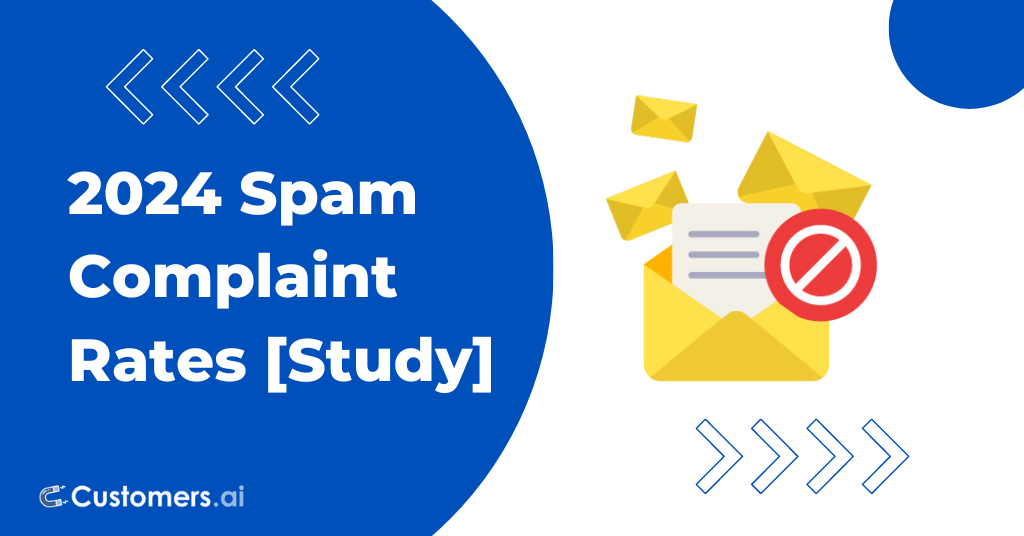Back in October, Google released new email guidelines. Set to be released in a few weeks (February 2024), the guidelines, which impact bulk senders (anyone sending over 5,000 emails a day to Gmail addresses) and general Gmail senders, gave us changes like authentication enforcement and spam complaint rate thresholds.
Given that this is one of the biggest email updates we’ve seen in some time and certainly one of, if not the first time Google has given us specific numbers, we felt this was going to have a significant impact on email marketers. More so, we felt this was going to have a significant impact on outbound email marketers aka B2B sales and marketing teams.
Our initial assessment was this:
“The challenge will be for start-ups or smaller, less established companies. Specifically, those in the B2B space that may be using more aggressive outbound strategies or have been leaning on ABM to establish their brand. These companies must adhere pretty closely to best practices to avoid hitting the 0.3% threshold.”
And it turns out…we were right.
I had the team dig into spam complaint rates across the B2B space and found that they are well beyond the 0.3.% threshold that has been laid out by Google and Yahoo.
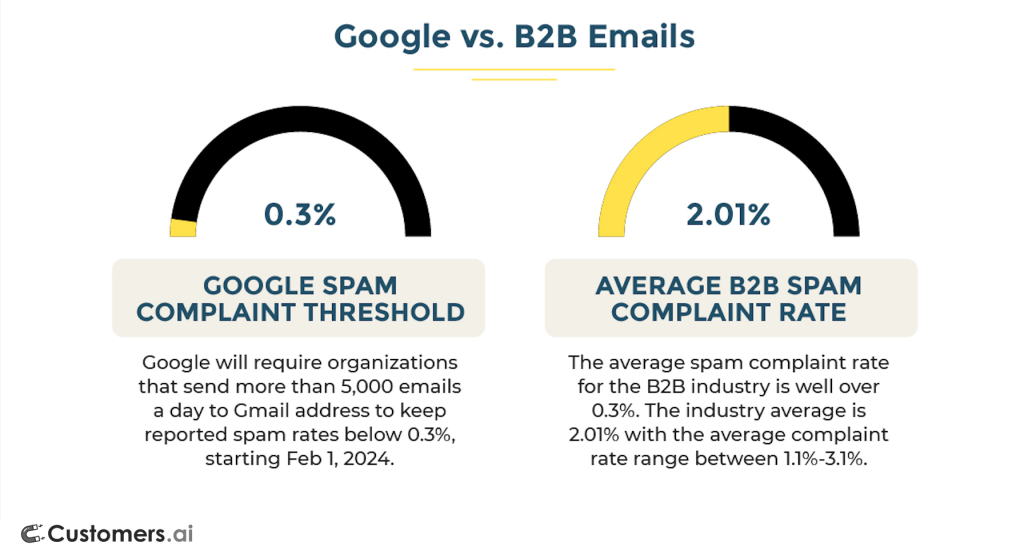
It’s not even close! The average spam complaint rate across the B2B space was 2.01%, with a range between 1.1% and 3.1%.
When we break it down by industry, we get an even clearer picture:
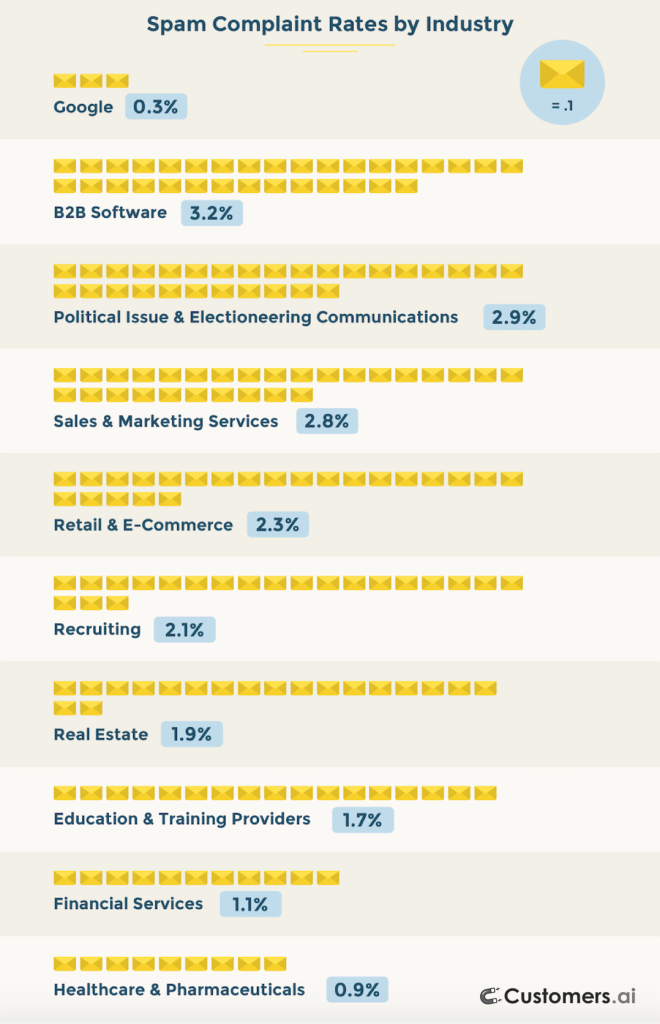
Key Takeaway: B2B Outbound Marketing is in Trouble
We looked at the B2B space as that’s where the majority of cold outreach takes place.
Unfortunately for B2B marketers and sales teams, there doesn’t seem to be a way to do outbounding with complaint rates below 0.3%.
In fact, for the top 9 spammiest verticals, we were unable to find a single sender that was able to score below the 0.3% proposed threshold.
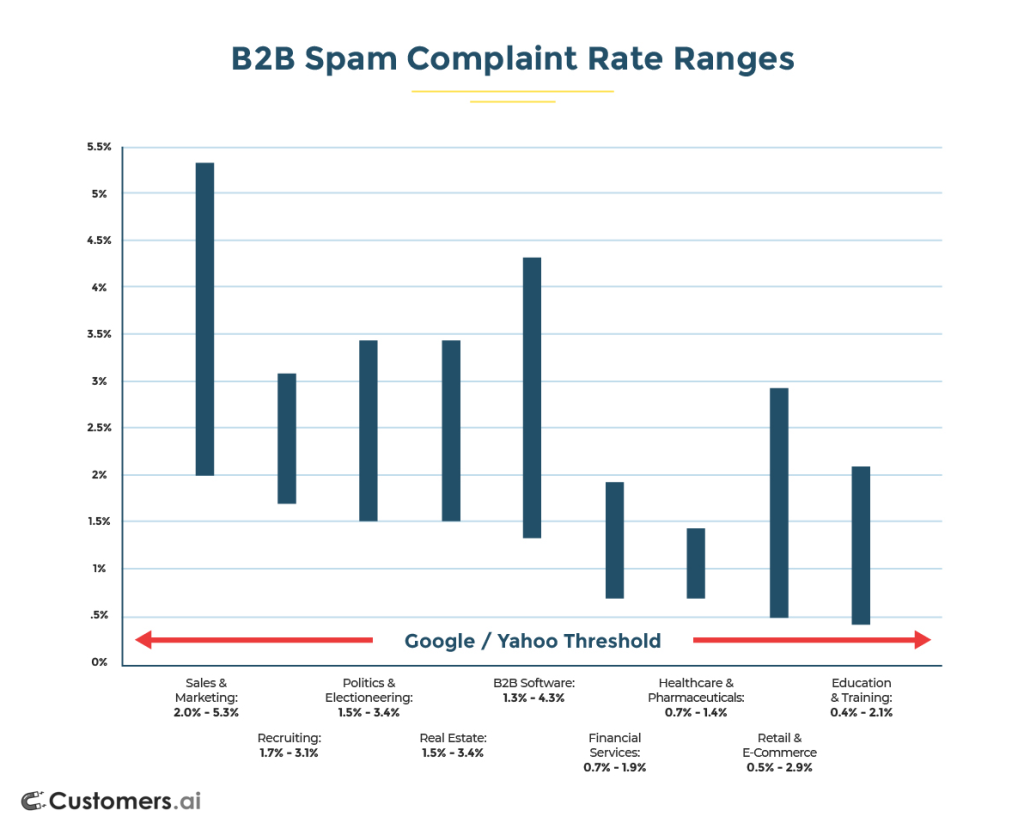
This poses a big problem, especially for businesses that rely on outbound emails to generate leads and drive business.
Tips for Lowering B2B Spam Complaint Rates
All is not lost when it comes to the new spam complaint threshold. There are plenty of things email marketers and sales teams can do to reach the inbox:
- Focus on Warm Leads. Move away from cold lists and focus on high-intent active site users. Website visitor identification can tell you who these people are.
- Make Unsubscribe Options Clear. Don’t hide your unsubscribe. If a user can’t find the unsubscribe button, they are more likely to mark you as spam.
- Add Multiple Unsubscribe Links. We recommend giving your users several options – include unsubscribes in the body and the footer.
- Tighten Your Audience Segments. You can create better audiences and better messaging by layering more data filters.
- Enhanced Email Customization. The more customized your email is to the individual, the less likely it is they will complain.
- Increase Helpful Transactional Emails. Emails like order confirmations, tracking information, or purchase follow-ups can help increase email volume and won’t result in complaints.
How Customers.ai Can Help
The main problem with all of this is the cold outreach.
Like I said before, it’s not the big businesses with established customer bases and large inbound lists that will be impacted. This update specifically impacts those who are using more aggressive outbound strategies or have been leaning on ABM to establish their brand.
Companies need to shift away from the old tactics of buying and emailing cold lists if they are going to succeed with outbound.
Companies need to focus on capturing first-party data and shifting their outbound strategies to warm leads.
That’s where Customers.ai comes in.
With the Customers.ai Website Visitor ID X-Ray Pixel, you can capture visitors to your site.
That doesn’t mean you should email all of them but it does allow you to nurture them. Perhaps you add them to your retargeting campaign or add them to your CRM.
For those who take high-intent actions, it may make sense to put them into your email automation.
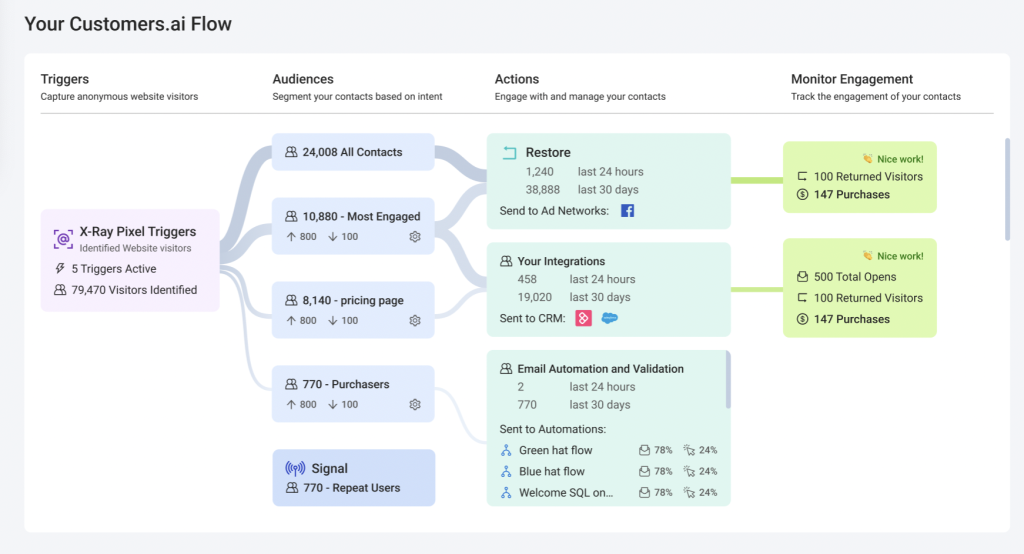
The difference between cold emails and this is that these people are already familiar with you. Maybe they haven’t given you their info but perhaps they visited your pricing or request a demo page. They’ve shown enough interest that it won’t feel like spam.
B2B Spam Complaint Rate Threshold: Report Methodology
The data on spam complaint rates across various industries was compiled by Customers.AI‘s analytics team, leveraging a systematic approach focused on targeted outbound email campaigns. This comprehensive analysis was conducted over a four-week period, from November 20th to December 20th, encompassing a diverse range of industries known for their reliance on email marketing.
The methodology adopted for data collection involved a two-pronged approach:
- Data Aggregation: Utilizing API integrations with multiple ESPs, we aggregated a large dataset (1 million+) of email campaign metrics. This dataset encompassed key parameters such as the number of emails sent, open rates, click-through rates, and the frequency of spam complaints. The data aggregation process was automated to capture real-time data, ensuring the timeliness and relevance of the information collected.
- Statistical Analysis: The team employed advanced statistical techniques, including regression analysis and variance estimation, to identify patterns and derive insights from the aggregated data. This included calculating the mean spam complaint rates and their ranges for each industry and adjusting for outliers and anomalies to ensure accuracy.
To refine the accuracy of our analysis, we incorporated:
- Segmentation by Industry: Emails were categorized based on the industry of the sender, enabling a granular analysis of spam complaint rates across different sectors.
- Temporal Analysis: The study accounted for variations in email campaign performance across different times of the week and day, recognizing the impact of timing on recipient engagement and spam complaint likelihood.
- Compliance and Legal Framework Consideration: The analysis was conducted with a keen awareness of varying spam regulations across different regions, ensuring that the data reflects a global perspective on email marketing practices.
Get The Full Infographic

Important Next Steps
- See what targeted outbound marketing is all about. Capture and engage your first 500 website visitor leads with Customers.ai X-Ray website visitor identification for free.
- Talk and learn about sales outreach automation with other growth enthusiasts. Join Customers.ai Island, our Facebook group of 40K marketers and entrepreneurs who are ready to support you.
- Advance your marketing performance with Sales Outreach School, a free tutorial and training area for sales pros and marketers.
